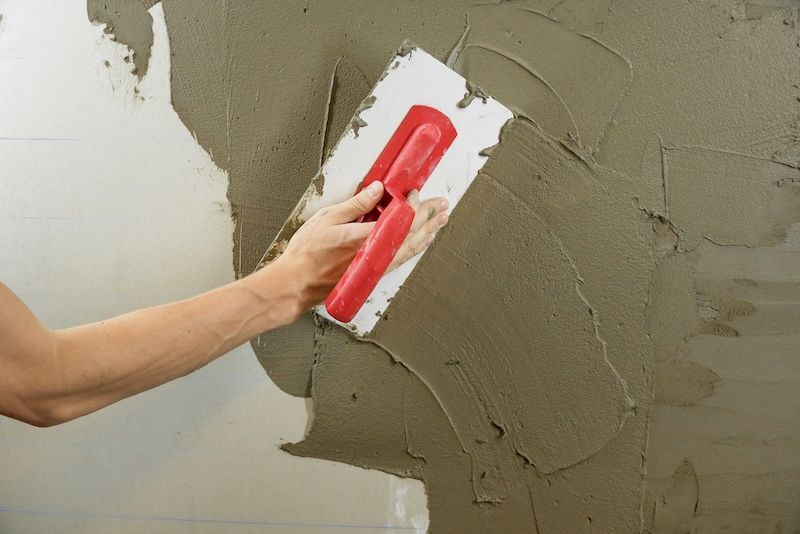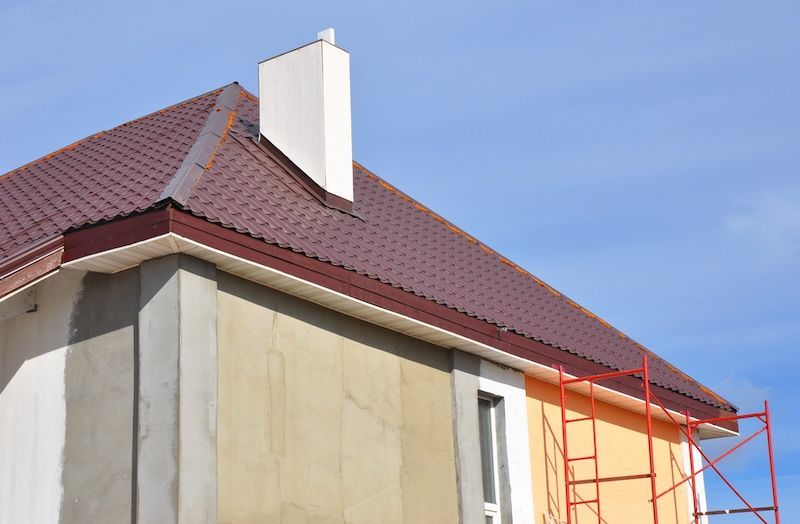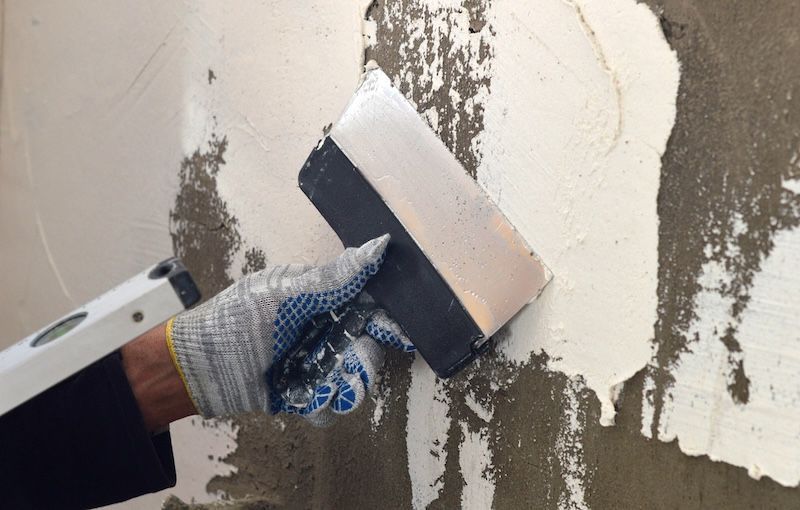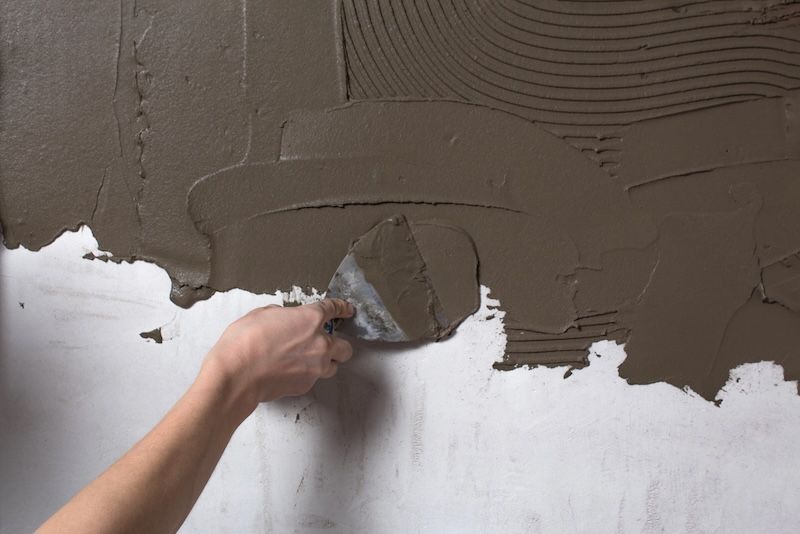Top Signs You Need Professional Stucco Hole Repair
Damaged stucco might look harmless at first, but even small issues can lead to big problems. Cracks, holes, and loose stucco create openings for water to seep in, causing mold, mildew, and structural damage.
Over time, this compromises not just your home’s safety but also its curb appeal. Ignoring stucco damage, even tiny hairline cracks can lead to expensive repairs that could have been avoided.
The good news? Professionals can help. They’ll assess the damage, apply stucco patch material, and complete a stucco hole repair to restore your walls and stop further issues.
Before we explore the signs your stucco might need professional attention, let’s break down what stucco hole repair is and why it’s so important for protecting your home.
What is Stucco Hole Repair?
Stucco hole repair is the process of fixing cracks, gaps, or holes in your exterior stucco to restore its durability and appearance. Professionals use tools like a wire brush, putty knife, and clean rubber float to prepare the damaged area. They then apply stucco patch material in the right ratio, ensuring the repaired area blends seamlessly with the existing texture. This involves carefully layering the scratch coat, brown coat, and finish coat to match the stucco’s original strength and finish.
Addressing these issues early prevents larger, more costly repairs. Whether small cracks or larger gaps, stucco hole repair helps protect your home.
Next, let’s dive into the signs that indicate it’s time to call a professional for stucco repair.
Signs You Need Professional Stucco Hole Repair

Stucco is durable and long-lasting, but damage can develop over time. From small cracracks to water seeping through larger cracks, these issues hurt your home’s appearance and lead to mold, moisture damage, and structural concerns. Here are the top signs it’s time to repair stucco:
1. Visible Cracks and Holes
Stucco cracks and holes in the stucco surface might seem small, but they can lead to big issues. Small hairline cracks are often caused by weather changes or settling and are usually cosmetic. However, larger cracks or holes could mean serious problems like water seeping into your walls or structural stress. Ignoring these issues allows moisture to damage the stucco, which may require a more extensive
stucco hole repair later.
| Cause | Possible Outcome if Not Addressed | How to Address It |
|---|---|---|
| Environmental Factors | Cracks expand, allowing water to infiltrate. | Regularly inspect and apply a stucco patch to prevent further damage. |
| Impact Damage | Holes expose metal lath and underlying materials. | Repair the damaged area using bonding agent and new stucco layers. |
| Structural Settling | Larger cracks compromise wall integrity. | Reinforce the wall before repairing the stucco using proper tools. |
2. Discoloration and Staining
Brown or rust-colored streaks near windows, dark patches, or blotches on the stucco surface are clear signs of trouble. These stains often indicate water intrusion, rusting of metal lath or wire mesh, or poor drainage around your home. Discoloration isn’t just cosmetic—it’s a warning sign that moisture compromises your stucco finish and potentially causes mold or decay beneath the surface. Addressing these issues quickly with professional stucco repair can prevent further damage.
| Cause | Possible Outcome if Not Addressed | How to Address It |
|---|---|---|
| Water Intrusion | Mold growth, poor air quality, and decay. | Seal entry points and remove excess material while treating the mold. |
| Rusting Components | Rust weakens wire mesh and structural supports. | Replace rusted materials and restore the stucco finish. |
| Improper Drainage | Persistent moisture buildup worsens the damage. | Improve drainage and apply a new coat of stucco to damaged areas. |
3. Bubbling or Blistering Surfaces
Bubbling or blistering on the stucco surface happens when moisture gets trapped beneath the layers. This can weaken the base and scratch coats, creating raised areas that may eventually burst. When blisters burst, they expose the underlying layers, leaving your wall vulnerable to water seeping, mold growth, and structural damage. These issues aren’t just unsightly—they’re signs of serious stucco problems that require professional attention.
| Cause | Possible Outcome if Not Addressed | How to Address It |
|---|---|---|
| Trapped Moisture | Leads to mold, mildew, and weakened stucco layers. | Seal water entry points and repair the damaged area with new material. |
| Improper Installation | Blisters worsen as the stucco fails to adhere. | Remove improperly installed stucco and reinstall per manufacturer's directions. |
| Aging or Wear | Spread of cracks and blisters compromises integrity. | Inspect and replace damaged stucco to restore durability. |
4. Mold and Mildew Growth
Green or black spots on your stucco surface and musty odors are warning signs of mold growth. Mold forms when moisture becomes trapped in the stucco, creating the perfect environment for it to thrive. This doesn’t just affect the appearance of your home—it can harm indoor air quality and cause the stucco material to decay. Addressing mold early is crucial to prevent further damage.
| Cause | Possible Outcome if Not Addressed | How to Address It |
|---|---|---|
| Trapped Moisture | Mold growth damages air quality and walls. | Treat the affected area and apply mold-resistant finishes. |
| Poor Ventilation | Creates damp conditions ideal for mold growth. | Improve airflow and regularly inspect to prevent moisture buildup. |
5. Interior Signs of Damage
When your exterior stucco is damaged, it’s only a matter of time before the issues spread inside your home. Peeling paint, damp spots, or water stains near walls are all signs of water ingress. These problems often point to hidden damage beneath the surface, such as weakened materials or mold growth. Ignoring these signs can lead to costly repairs and further structural problems.
| Cause | Possible Outcome if Not Addressed | How to Address It |
|---|---|---|
| Water Ingress | Moisture damages walls and interior materials. | Repair exterior stucco to seal water pathways and prevent leaks. |
| Hidden Damage | Gradual deterioration of structural components. | Inspect for hidden issues and reinforce the structure before repairing. |
Recognizing the signs of stucco damage early can save you from costly repairs and prevent long-term issues like mold, water damage, or structural weakening. From small hairline cracks to bubbling surfaces and interior damage, professionals best handle these problems. Don’t wait—act now to restore your stucco and protect your home for years to come.
Why Should You Trust a Professional for Stucco Hole Repair?
Stucco repair is more than patching material onto a wall—it’s about finding and addressing the root cause. Professionals use tools like a wire brush, bonding agent, and rubber float to ensure a properly installed finish. They follow the manufacturer’s directions to seamlessly match the existing surface.
DIY fixes may seem tempting, but they often leave cracks or the repaired area vulnerable to future issues. Trusting a professional ensures your stucco problems are resolved correctly, safeguarding your home’s value and durability.
Secure Your Home with Professional Stucco Hole Repairs
Stucco damage, whether it’s cracking, bubbling, discoloration, or interior signs like peeling paint and damp spots, can lead to serious structural problems if ignored. These issues allow moisture to seep in, causing mold growth, material decay, and weakened walls. By addressing damage early with professional stucco hole repair, you can prevent costly repairs and maintain your home’s safety and aesthetic appeal.
That’s where Orlando Stucco Repair Pros comes in. With years of expertise, they specialize in diagnosing and resolving stucco damage quickly and effectively. They restore your walls to their original strength and appearance using high-quality materials and proven techniques. Don’t let minor issues become major headaches—call Orlando Stucco Repair Pros today for lasting, reliable stucco solutions!
RECENT BLOGS
All Rights Reserved | Orlando Stucco Repair Pros


